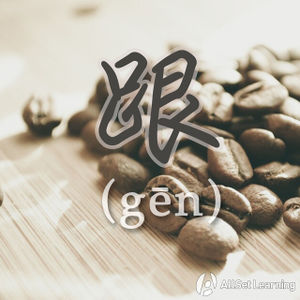Difference between revisions of "Expressing "with" with "gen""
ViktorMugli (talk | contribs) |
|||
| Line 14: | Line 14: | ||
<div class="liju"> | <div class="liju"> | ||
| − | * 我 <em>跟</em> | + | * 我 <em>跟</em> 两 个 同事 去 北京。 |
* 我 <em>跟</em> 我 朋友 喝 啤酒。 | * 我 <em>跟</em> 我 朋友 喝 啤酒。 | ||
* 他 <em>跟</em> 他 家人 一起 吃饭。 | * 他 <em>跟</em> 他 家人 一起 吃饭。 | ||
| + | * 你 要 <em>跟</em> 我 一起 去 吗? | ||
| + | * 不要 <em>跟</em> 我 说话! | ||
</div> | </div> | ||
| Line 26: | Line 28: | ||
*[[Verbs with gei]] | *[[Verbs with gei]] | ||
*[[Using "dui"]] | *[[Using "dui"]] | ||
| + | *[[Expressing "and" with "he"]] | ||
== Sources and further reading == | == Sources and further reading == | ||
| Line 34: | Line 37: | ||
[[Category:A2 grammar points]] | [[Category:A2 grammar points]] | ||
| − | {{Basic Grammar|跟|A2|跟…… + V|我 <em>跟</em> | + | {{Basic Grammar|跟|A2|跟…… + V|我 <em>跟</em> 两 个 同事 去 北京。不要 <em>跟</em> 我 说话!|grammar point|ASGSZ0HP}} |
{{Similar|Expressing "together" with "yiqi"}} | {{Similar|Expressing "together" with "yiqi"}} | ||
{{Similar|Verbs with gei}} | {{Similar|Verbs with gei}} | ||
Revision as of 06:51, 21 August 2012
-
Level
-
Similar to
-
Used for
-
Keywords
Structure
The preposition 跟 (gēn) is commonly used to express "with".
Subject + 跟 + Person + Verb + Object
Examples
- 我 跟 两 个 同事 去 北京。
- 我 跟 我 朋友 喝 啤酒。
- 他 跟 他 家人 一起 吃饭。
- 你 要 跟 我 一起 去 吗?
- 不要 跟 我 说话!
As in the last sentence, 跟 is often used with 一起.



